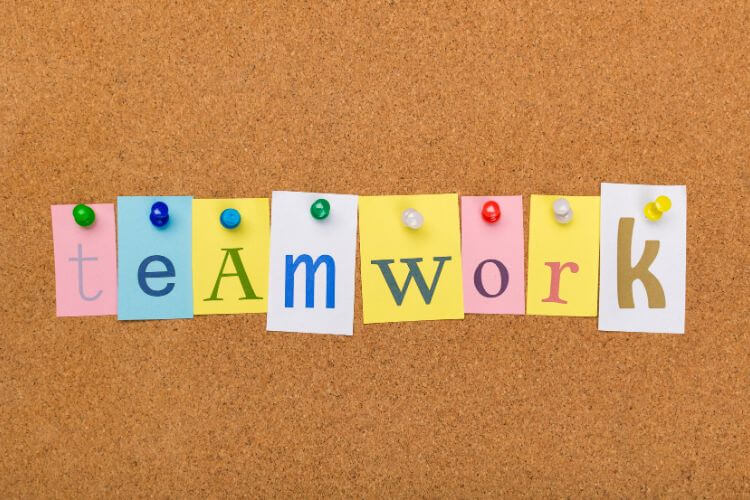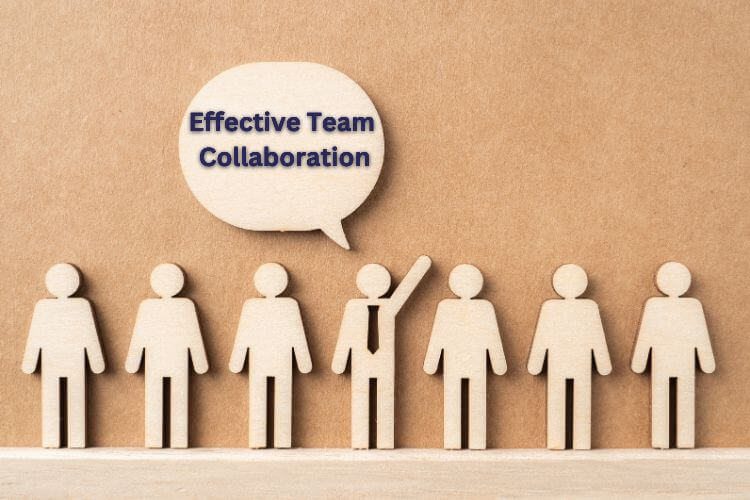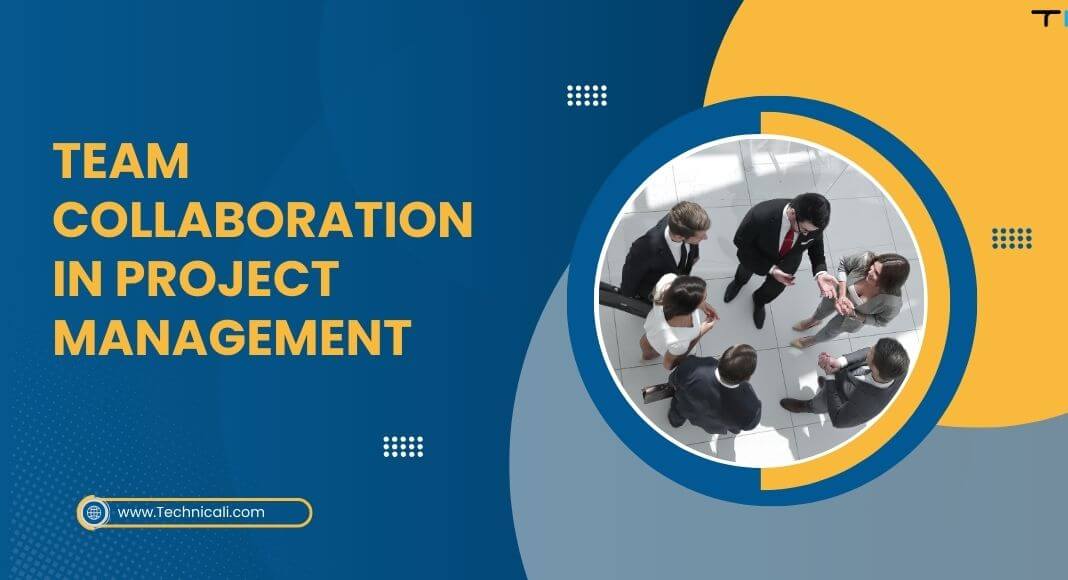With agile methodologies and SaaS solutions dominating today’s highly connected digital world, one would almost expect collaboration within project teams to come quickly. Unfortunately, however, that’s not the case. Consider this: According to research by the Project Management Institute (PMI), ineffective collaboration is cited as the primary contributor to project failure in 60% of cases. What often remains unquantified are the silent tolls financial, emotional, and strategic imposed by faulty team synergy. From ballooning operational costs to diminished team morale, the hidden costs of poor teamwork can set even the most promising initiatives on a collision course with missed deadlines, frustrated stakeholders, and stalled innovation.
This article promises to do more than just define these hidden costs. It will expose their underlying causes, highlight their long-term repercussions, and offer a roadmap toward building cohesive, future ready teams. By understanding these elusive pitfalls, leaders and executives can finally pivot from firefighting tactical inefficiencies toward architecting an environment where every conversation, task, and metric moves the organization closer to its strategic objectives.
Contents
- 1 Understanding the Scope of Inefficient Collaboration
- 2 The Direct Financial Impacts of Poor Teamwork
- 3 The Hidden Emotional and Cultural Costs
- 4 Identifying the Root Causes of Poor Collaboration
- 5 Actionable Strategies to Improve Team Collaboration
- 6 The Long-Term ROI of Effective Team Collaboration
- 7 Recognizing the Breadth of Inefficienct
- 8 The Monetary and Operational Drain
- 9 Emotional and Cultural Undercurrent
- 10 Pinpointing Root Causes
- 11 Unlocking Sustainable, Cohesive Collaboration
- 12 The Enduring Dividends of Cohesion
- 13 Managing Remote Teams to Foster Effective Collaboration and Teamwork
- 14 Best Practices to Minimize Turnover, Low Morale, and Hidden Costs
- 15 Strategies to Unlock Your Team’s Full Potential and Increase Efficiency
- 16 Conclusion
Understanding the Scope of Inefficient Collaboration

Defining Inefficiency in the Modern Workspace
In the world of project management, inefficiency emerges not merely from misunderstandings but from the friction created when tasks, roles, and responsibilities are unclear. Imagine a scenario where three different departments marketing, development, and customer success spin in parallel directions without a centralized hub for dialogue. This fragmentation results in redundant efforts, unclear timelines, and a persistent question of “Who’s responsible for this?” resonating in our weekly stand-up meetings.
Why This Matters for Decision-Makers
For C-level executives and senior managers, poor collaboration isn’t just an abstract annoyance. When employees struggle to collaborate, market opportunities slip by, competitor advances go unanswered, and brand consistency falters. According to McKinsey, improved collaboration and communication through social technologies can raise productivity by 20% to 25%. Leaders who remain ignorant of this dynamic risk handicapping their organizations, leaving them stranded in the wake of more agile competitors who have mastered the art of seamless coordination.
The Direct Financial Impacts of Poor Teamwork

- Lost Billable Hours and Increased Labor Costs
- Wasted Time in Meetings:
Teams often spend excessive hours in convoluted status calls, crowded brainstorming sessions, or “alignment” discussions that yield little actionable output. As Harvard Business Review reports, unproductive meetings cost U.S. companies a staggering $37 billion annually. Each minute diverted to clarifying miscommunications or re-verifying last week’s tasks chips away at profit margins. It’s not just wasted time; it’s an opportunity lost billable hours that could have propelled product enhancements or accelerated customer onboarding. - Redundant Work Due to Miscommunication:
Imagine a situation where the marketing team updates a pricing document, but the product team continues referencing the old one. This mismatch forces two employees to redo the same presentation slides or replicate data analysis that has already been performed.
- Wasted Time in Meetings:
- Action Step: Centralize documentation within one project management tool and enforce version control so all people refer to the latest assets.
- Project Delays and Missed Deadlines
- Cascading Effects on Revenue:
A seemingly minor two-week delay in a product launch perhaps caused by a missed memo or an overlooked integration can trigger a domino effect. Market buzz dissipates, prospective customers lose interest, and sales teams struggle to hit quarterly targets. According to the Standish Group’s CHAOS Report, only about 29% of projects end successfully on time and within budget. This inefficiency is often rooted in poor collaboration, resulting in longer lead times that directly impact revenue. - Opportunity Costs:
Energy spent correcting internal misalignments is not spent on nurturing innovation. Rather than brainstorming a new feature that can create a unique competitive advantage, the team acts like detectives, trying to determine who dropped the ball.
- Cascading Effects on Revenue:
- Increased Tool & Integration Costs
- Tool Overload:
To fix communication gaps, organizations invest in multiple SaaS platforms email plus chat plus project boards plus intranets until the team is drowning in logins and notifications. Each redundant tool exacts a subscription fee, training overhead, and IT maintenance burden.
Action Step: Audit your tech stack quarterly and consolidate functionalities under a robust all-in-one project management platform. - Inefficient Integrations:
Ad hoc integrations that fail to sync data seamlessly create ongoing friction. IT personnel must frequently troubleshoot, patch, and maintain these band-aid solutions, draining budgets and attention.
- Tool Overload:
The Hidden Emotional and Cultural Costs

- Decreased Employee Morale and Retention
- Burnout from Rework:
When employees repeatedly resolve the same misunderstandings or recreate materials lost in a cluttered digital “graveyard,” frustration brews beneath the surface. Over time, talented individuals feel stifled and undervalued, prompting costly turnover. This churn not only boosts recruitment expenses but also disrupts institutional knowledge continuity. - Emotional Toll on Leadership:
Executives tasked with oversight become weary referees of internal disputes. Instead of focusing on growth strategy or market positioning, they extinguish internal flare ups. The psychological weight of leadership always on alert to decode conflicting signals can detract from visionary thinking.
- Burnout from Rework:
- Damage to Brand Reputation
- Client Perception:
When internal chaos seeps into client-facing interactions, deadlines slip, and support responses slow. Customers, sensing disorganization, may question the vendor’s reliability. In fiercely competitive SaaS markets, reputational hits can cripple future pipeline growth and scare away cautious prospects. - Supplier & Partner Relationships:
Vendors and collaborators prefer working with companies that have their act together. Chronic delays and unclear directives sour relationships, weakening negotiation power and diminishing the potential for mutually beneficial ventures.
- Client Perception:
- Reduced Innovation & Creativity
- Stifled Brainstorming Sessions:
A cluttered, confused environment discourages free-flowing ideation. Instead of exploring creative solutions, participants fixate on clarifying old instructions. Well orchestrated, collaborative brainstorms can cut time to innovation in half, allowing organizations to stay ahead of market shifts and emerging trends. - Inhibited Knowledge Sharing:
Inefficient collaboration stifles the collective intelligence that propels true advancement. Without proper channels to exchange insights, each department evolves in isolation. Teams miss out on cross-pollination of ideas that could ignite breakthrough products or streamline processes company-wide.
- Stifled Brainstorming Sessions:
Identifying the Root Causes of Poor Collaboration
- Poor Onboarding and Training
- Unclear Roles and Responsibilities:
Without explicit delineation of who does what, confusion spreads rapidly. Employees spend time guessing instead of executing. Train new hires thoroughly on communication protocols, ensuring they hit the ground running. - Inadequate Training on Project Management Tools:
A robust platform is worthless if teams lack the know-how to use its features thoroughly. Offer hands-on workshops, interactive tutorials, and regularly updated training materials to ensure that personnel leverage every tool advantageously.
- Unclear Roles and Responsibilities:
- Misaligned Goals and KPIs
- Conflicting Objectives:
When product development measures success by code delivery speed while marketing prizes brand sentiment, dissonance arises. Align KPIs early, establishing a unified definition of “success” and ensuring each team marches in the same direction.
Action Step: Create a shared project charter outlining overarching goals, timelines, and metrics everyone must respect.
- Conflicting Objectives:
- Lack of a Centralized Collaboration Hub
- No Single Source of Truth:
Relying on scattered documents across cloud drives, email threads, and Slack chats leads to version nightmares. A centralized hub not only ensures accuracy but also instills trust. Everyone references the same data, eliminating guesswork and finger-pointing. - Fragmented Documentation:
Without a unified repository, critical knowledge fragments and decays. Key learnings from past projects vanish into forgotten folders, forcing teams to relearn hard lessons and repeat past mistakes.
- No Single Source of Truth:
Actionable Strategies to Improve Team Collaboration
- Implement a Robust Project Management Platform
- Feature Criteria:
Seek a solution integrating communication, task assignment, file sharing, analytics, and reporting. The best platforms reduce complexity instead of amplifying it. - Mini Case Study:
A mid-sized SaaS firm consolidated five separate tools into one central platform, slashing project churn by 35%. By streamlining communication and establishing transparent workflows, they accelerated product launches and enhanced team morale.
- Feature Criteria:
- Standardize Communication Protocols
- Define When to Use Each Channel:
Email for longer updates, instant messaging for short clarifications, and project management boards for keeping track of tasks. The clarity allows teams to use the right medium for the right message - Action Step: Document communication guidelines and enforce them. Over time, teams internalize these norms, eliminating chaotic channel-hopping.
- Define When to Use Each Channel:
- Foster a Collaborative Culture
- Encourage Regular Feedback Loops:
Host monthly retrospectives where teams openly discuss what worked and what didn’t. Run “learning lunches” to highlight best practices and bring silent issues to the surface. Culture is not static; it evolves with consistent, deliberate effort. - Mentorship and Cross-Functional Sessions:
Allow developers to sit in on marketing brainstorms and invite customer success reps to product demos. Cross-pollination sparks new ideas and dismantles “us vs. them” mentalities.
- Encourage Regular Feedback Loops:
- Align Goals and KPIs from the Start
- Unified Project Charters:
Each new initiative should begin with a clear, concise charter detailing its objectives, milestones, and success metrics. Visibility ensures that everyone understands their role in the grand narrative. - Public Dashboards:
Make progress reports accessible to all stakeholders. Transparency not only keeps everyone informed but also fosters accountability and trust.
- Unified Project Charters:
The Long-Term ROI of Effective Team Collaboration

- Faster Go-To-Market Timelines
Reduced friction means products and features ship sooner. Capturing market share earlier can be the difference between leading an industry trend and merely following it.
- Enhanced Company Reputation
Satisfied clients spread the word. Positive brand recognition can manifest in referrals, media coverage, and stronger partnerships – an intangible asset that compounds over time.
- Sustainable Growth and Scalability
As organizations expand, collaborative best practices scale along with them. Instead of reinventing processes for each new department or satellite office, a well-tuned collaboration engine propels continuous growth with minimal roadblocks.
Recognizing the Breadth of Inefficienct
- Beyond Late Memos and Mixed Messages
At first glance, flawed collaboration might be written off as a few scattered misunderstandings; an overlooked chat message here, a missing file link there. Yet the real trouble begins when these misfires become routine, bogging down progress at every layer. Ambitious release schedules devolve into shapeless timelines as tasks get reassigned, recalibrated, and re-reviewed. Department heads scramble to decipher unclear directives while individual contributors spin their wheels to reconcile conflicting instructions.
- Why It Matters to Those at the Helm
For senior executives and strategic decision-makers, inefficient teamwork is not a trivial glitch it’s an existential risk. When communication pipelines clog, organizations hemorrhage time and capital. Less tangible but equally devastating are the trust issues that arise, both internally and with the outside world. As competition intensifies and consumer expectations soar, ignoring these fractures can leave an enterprise treading water while faster, leaner rivals surge ahead.
The Monetary and Operational Drain
- Vanishing Hours and Inflated Labor Costs
The meetings that yield no clear outcomes. The duplicated analyses because nobody knew someone else already crunched the numbers. The frantic email chains that stretch late into the evening. Each seemingly minor hiccup siphons away valuable hours hours that carry quantifiable costs. Studies on corporate productivity reveal that unnecessary meetings result in billions of dollars in losses for global businesses each year. Within these unproductive periods, valuable opportunities are missed: resources that could have been invested in marketing initiatives, development processes, or customer acquisition plans.
- Deadlines That Disappear into the Distance
In today’s marketplace, timing is currency. A two-week delay in rolling out a key product feature, prompted by tangled communication and fuzzy responsibilities, can mean the difference between leading a sector trend or missing it altogether. Investors, customers, and partners value punctuality. The impact of a single missed milestone can disrupt the careful balance of strategic planning, diminishing potential market share before it is even reached.
- The Quiet Inflation of the Tech Stack
When internal disarray prevails, decision-makers often reach for new collaboration tools in hopes of enforcing order one platform for workflow visualization, another for messaging, and yet another for reporting analytics. Before long, the enterprise drowns in overlapping subscriptions, scattered data silos, and complex integrations that costs companies more to maintain than they solve. Regular audits of software ecosystems can reveal bloat as tangible as missed revenue targets, showing just how much financial weight inefficiency can accumulate behind the scenes.
Emotional and Cultural Undercurrent
- Frayed Morale and Its Ripple Effects
People join organizations to contribute meaningfully, solve challenging problems, and find fulfillment in their work. When entangled in a web of unclear directives and ever-shifting objectives, even the most enthusiastic team members can succumb to frustration and burnout. High employee turnover erodes institutional memory and forces hiring managers back into a perpetual recruitment cycle. Meanwhile, leaders act less like visionaries and more like firefighters dousing internal flare-ups, sapping their creative and strategic bandwidth.
- Reputational Bruises That Aren’t Easily Forgotten
A brand is only as strong as its ability to reliably keep promises. Siloed teams fail to provide integrated customer experiences. Delayed support, inconsistent product details, and dysfunctional onboarding all signal a deeper breakdown beneath the polished facade. Even outside partners will eventually lose faith and look for more reliable collaborators. The marketplace may over time come to see the organization not as a nimble innovator but as a risk too significant to justify.
- Stifling the Spark of Ingenuity
Innovation prospers best on fluid conversation, idea exchange, and interdisciplinary pollination. When knowledge is fragmented across hundreds of channels or bogged down in redundant documentation, brainstorming becomes an exercise in overcoming inertia rather than generating breakthroughs. The lack of a healthy collaborative environment can turn potential visionaries into frustrated contributors who stop sharing bold concepts that might otherwise redefine an industry niche.
Pinpointing Root Causes
- Onboarding Without a Compass
Poor training and vague role definitions leave new team members guessing at how to fit in. Even the best intentions get derailed without proper guidance on communication protocols and project management tools. Early interventions, detailed onboarding sessions, comprehensive tool tutorials, and crisp role outlines can nip chaos in the bud before it takes hold.
- Clashing Goals and Misaligned Success Metrics
A marketing department rewarded for brand reach may find its priorities at odds with a product team measured solely by release velocity. When each unit marches to a different rhythm, the harmony of progress devolves into discord. Aligning key performance indicators and ensuring everyone views success through a unified lens stops the cacophony before it starts.
- The Void Where a Hub Should Be
An organization without a single repository; whether a digital workspace, management tools, or integrated platform – divides its collective memory into isolated islands of information. Stakeholders spend more time finding relevant data than acting on it. Such information silos must be removed to create a shared vantage point where facts and files are always a click away from whoever is seeking them.
Unlocking Sustainable, Cohesive Collaboration
- Choosing a Centralized Project Management Solution
One decisive step is investing in a platform that consolidates messaging, task tracking, file storage, and real-time analytics. Opt for solutions that streamline rather than complicate. Some enterprises have reported slashing project churn by double-digit percentages simply by unifying their digital toolkit. The goal is to eliminate the guesswork of “Where was that file?” and replace it with a culture of “Let’s check the dashboard.”
- Defining Communication Norms with Precision
Email, chat, project boards, video calls; every channel plays a role, but not all are equal. Setting explicit guidelines around which medium to use for which purpose curtails confusion. When teams know where to announce a strategic pivot or where to pose a quick question, they waste less time rummaging through crowded inboxes and misaligned threads.
- Cultivating Feedback Loops and Transparency
Ongoing dialogue and structured review meetings; monthly retrospectives, cross-functional meetups, and knowledge lunches can shatter silos and foster trust. When contributors can voice what’s working and what’s not, the overall communication fabric across the company tightens. Pair that with accessible, open views of progress dashboards and unified KPIs for every member involved.
The Enduring Dividends of Cohesion
- Shortening the Path to Market
When all the gears mesh easily, time-to-market for new products or features contracts significantly. Speed can translate development cycles from arduous drudgery into quick-paced sprints. Capturing opportunity windows before peers provides a substantial edge as efficiency translates directly to bottom-line expansion.
- Polishing the Public Face
A well-choreographed internal environment ultimately yields consistent, confident external messaging. Clients sense the precision and care behind each interaction, breeding trust and fostering loyalty. Partners and suppliers recognize an organization they can rely on, enhancing negotiation power and collaboration prospects.
- Building a Launchpad for Scalable Growth
The principles of alignment, clarity, and efficient communication do not vanish as a business expands. By codifying true collaboration best practices, leaders create an infrastructure ready to support new teams, geographies, and markets. Scaling becomes less of a leap into the unknown and more of a calculated, confident step toward sustained relevance and profit.
Managing Remote Teams to Foster Effective Collaboration and Teamwork
Many organizations now operate in remote or hybrid models, and while this can boost flexibility, it can also hinder teamwork when collaboration isn’t structured well. Collaboration often suffers due to a lack of defined guidelines for how people work together across different time zones. Excessive reliance on email or chat can lead to excessive collaboration – where communication overload becomes its own pitfall. In a remote work environment, it’s essential to set clear roles and measure performance with aligned metrics that every team member can access.
- Lack of Collaboration in Remote Settings: A disconnected environment caused by scattered documents and siloed channels can quickly erode morale and cause lost productivity.
- Fostering a Collaborative Atmosphere: Incorporate regular video check-ins and structured daily stand-ups so that each team member understands the strategy and can ask questions before confusion escalates.
- Team Building Across Distances: Virtual activities, like online whiteboard brainstorming or casual chat rooms, help keep remote workers engaged. This sense of belonging can reduce the likelihood that employees will disengage and seek opportunities elsewhere.
By managing remote teams properly, you’re working toward an environment where teams are able to focus on shared goals and deliver consistent, high-value outcomes.
Best Practices to Minimize Turnover, Low Morale, and Hidden Costs
Turnover costs can be astronomical sometimes reaching as high as 200% of an employee’s annual salary – and turnover rates only climb when low morale sets in. Poor collaboration and lack of collaboration fuel employee turnover by making everyday tasks feel unproductive and draining. Many organizations fail to see how such operational inefficiencies quietly inflate the overall costs of inefficiency.
- Identifying Hidden Costs: Working inefficiently can lead to wasted time, miscommunication, and repeated tasks that drive up labor costs. Over time, these hidden costs become an enormous consequence for business viability.
- Keeping Employees Engaged: Better collaboration strategies such as cross-team collaboration, frequent feedback loops, and leadership transparency can keep them engaged and reduce turnover.
- Pitfalls of Excessive Collaboration: While it’s good for team members to collaborate, excessive collaboration can result in an overload of meetings that disrupt deep work. Striking the balance is a best practice for high-performing teams.
By addressing these areas, organizations can improve collaboration and cultivate a thriving culture that minimizes turnover and low morale in the long run.
Strategies to Unlock Your Team’s Full Potential and Increase Efficiency
To unlock your team’s full potential, it helps to create a work environment where teams are able to accomplish tasks without getting bogged down by redundant processes. Here are some steps to consider:
- Streamlined Onboarding and Cross-Team Collaboration
- Offer comprehensive onboarding for new hires so they understand team dynamics, tools like integrated dashboards, and how to collaborate effectively.
- Encourage cross-team collaboration to break down silos, improve knowledge sharing, and help each department come up with innovative ideas.
- Leverage the Right Management Tools
- Consolidate your management tools into a single platform that allows real-time updates, progress tracking, and integrated workflow management.
- A unified system is the first step toward a truly collaborative environment. When organizations are able to maintain a clear chain of tasks, they can do work done faster and pivot quickly if problems arise.
- Measure Success with Shared Metrics
- Establish a metric or measure for every critical part of your strategy: from development timelines to customer satisfaction. Public dashboards keep everyone accountable.
- When you maintain transparency, you also see a direct improvement in performance, reduced deadline overruns, and minimal delay in new product rollouts.
- Focus on Retention and ROI
- Replacing an employee is costly, both in terms of annual salary outlay and lost institutional memory. Addressing turnover early yields a better return on investment for your HR resources.
- Team building exercises, mentorship programs, and a supportive work environment enable employees to flourish. This is how you keep them engaged and able to successfully handle high-stress periods.
By following these strategies, organizations are able to create a collaborative environment that drives effective collaboration, fosters synergy, and reduces operational inefficiencies. This not only affects the bottom line enabling you to launch new products or services swiftly but also your organization’s reputation as a high-performing team with the capacity to adapt and scale.
Conclusion

Beneath the surface of delayed releases, duplicated efforts, and endless revisions, there is a story of unrealized full potential – of what happens when communication breaks down at a fundamental level. The actual cost of lack of collaboration or ineffective collaboration is not always an immediate line item on a spreadsheet; it’s the cultural malaise that stifles morale, the subtle loss of client faith, and the forfeited moments of innovation that never had a chance to flourish.
But these hidden costs are not inevitable. Executives committed to confronting such challenges can harmonize goals, streamline processes, and invest in collaboration tools that centralize knowledge and illuminate the path forward. As transparency takes hold and teams learn to move in unison as one team, organizations recover not only lost time and revenue but also the intangible qualities that make them dynamic, resilient, and ready for the future.
In the end, the journey toward true collaboration is not a finite project it’s a continuous evolution. Every improvement in communication strategy, every refinement in project workflow, and every acknowledgment of lessons learned paves the way for lasting excellence. Excellence, well-orchestrated, and deeply embedded may be the best competitive advantage an organization’s strategic planning can secure. When you create a collaborative environment, people work together seamlessly, fueling the next wave of growth and innovation. By recognizing and tackling the costs of inefficiency, you position your organization to thrive in a marketplace that prizes adaptability and cohesive, effective collaboration all while helping you unlock your team’s full potential for years to come.


